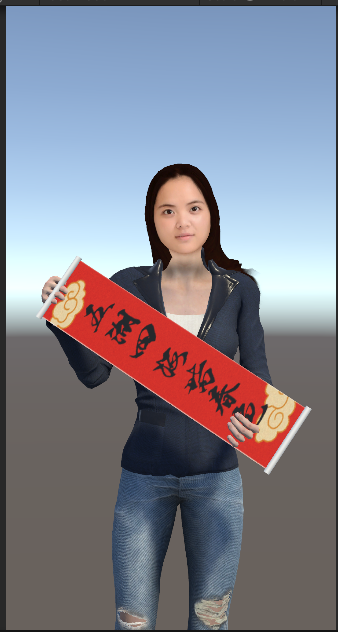
 Set range of keys to the same global position on one axis
Set range of keys to the same global position on one axis
I have a case where i need to correct an animation so that the hands ik position stays fixed in the same global position on the y-axis while keeping the motion on the x and z axis.
I can manually enter the y world position and get the desired result for an individual key, but I have very many keys.
Is there a way to do this?

Hi,
thank you very much for your support request.
- You could try to set IK Pinned to true on the very first frame. When UMotion asks you if it should convert all following existing keys, press Yes.
- Now the curves/key values are all in "pseudo world space". If you then open the curves view of the IK handle, select all keys of the y axis, right click on one of them and click on "Edit Key". Then type in the desired value and press enter to confirm.
Please let me know if that works for you.
Best regards,
Peter
 Is there a way to smoothly input animations that exceed 360?
Is there a way to smoothly input animations that exceed 360?
For example, if you enter 720 degrees, etc., and you want the image to rotate twice instead of remaining at the original position, etc.

Hi,
thank you very much for your support request.
The easiest way to do this is by first switching rotation mode to "Euler Interpolation":

Then if you type in 720° for rotation Y for example, and create a key frame, it is going to spin multiple times.
You can also adjust the degrees and the way it interpolates in the curves view of the clip editor.
Please let me know in case you have any follow-up questions.
Best regards,
Peter

 Bake animations
Bake animations
Hi, can I use UMotion to make an animation clip of an animation I created using unity avatar mask and unity Ik ?
And how ? Sorry to disturb, I am new to this.

Hi,
thank you very much for your support request.
Probably not (maybe with some scripting and a few workarounds) but I think it might be easier to just re-do the animation using UMotion Pro. UMotion Pro come's with built in IK and you could use your existing animation as a blue print to re-do the same thing in UMotion Pro. Depending on your experience level (to animations in general) and the complexity of the animation, you might be able to re-do the animation in under an hour.
Please let me know in case you have any follow-up questions.
Best regards,
Peter

 Pinning Unpinning Adds Pos/Rot
Pinning Unpinning Adds Pos/Rot

Hello, the foot didn't move, but pinning unpinning adds some position/rotation changes, they are marked blue on the right
why it does that, it adds unnecessary movement

Hi,
thank you very much for your support request.
IK Pinning is transitioning the coordinate system when the pinning state is changed (e.g. from local to world space). In order to do that, it needs to first create a key frame in the old coordinate space and then a second key frame in the new coordinate space.
Als long as you keep both keys in sync (which in most cases UMotion does automatically for you) there is no movement in between. More information can be found in the related video tutorials:
is it possible to turn off muscle group window? using multiple scenes it is always in the way
Yes you can turn off the scene view window (aka "Tool Assistant" in the display section of the pose editor).
Please let me know in case you have any follow-up questions.
Best regards,
Peter

 difference after exporting animation
difference after exporting animation
I'm having a different result after exporting my animation.

after exporting,the chunlian's position is diffrent.


Hi,
thank you very much for your support request.
This is a typical issue when using humanoid and has something to do with how humanoid works under the hood.
There are two solutions:
1) Turn on humanoid's hand IK (can only be done via script) to tell humanoid that you need the hands to be precisely where you've authored them.
2) Use generic instead of humanoid. Contrary to humanoid, generic just takes an authored animation clip as an input and plays it 1:1 as it is.
Humanoid is an animation re-targeting system designed to allow sharing an animation across multiple characters by imitating the look of an animation. Humanoid is not suited for precise things as it looses precision due to "re-targeting errors". More info about humanoid's inner workings: https://blog.unity.com/technology/mecanim-humanoids
Please let me know in case you have any follow-up questions.
Best regards,
Peter

 I have a question about Animation Converter.
I have a question about Animation Converter.
Is it possible to change animation from humanoid to legacy?
Thanks.

Hi,
thank you very much for your support request.
Yes a conversion from humanoid to legacy is possible. This is how it would work:
1) Duplicate your legacy character's source file (usually *.fbx) and configure the duplicated version as humanoid.
2) Adjust the settings in the animation convert to convert from humanoid to legacy and assign the humanoid and legacy version of your character to the appropriate fields in the animation converter.
Let me know in case you have any follow-up questions.
Best regards,
Peter

 Timeline sync with override tracks
Timeline sync with override tracks
Hi Peter,
Thank you very much for the tool. Editing within unity is a very great thing in term of workflow.
I'm currently trying to edit animations via my timeline in a quite complexe override track setup that mimics my mecanim layers.
I can edit the animation correctly and sync it but it's not previewing the other tracks or maybe not applying the avatar mask that is provided. How could I handle this ?
Thanks !


Hi,
thank you very much for your support request.
When synchronizing with Unity Timeline, UMotion takes the authority over your character and previews the animation you have currently loaded in UMotion. The additional layers in Unity Timeline are not going to be previewed during this time.
Please let me know in case you have any follow-up questions.
Best regards,
Peter

 Generic animation different through UMotion to timeline
Generic animation different through UMotion to timeline
Hello Peter,
I am having trouble with the animated object (Dragonfly) moving to different locations when the object is in the pose editor and when it isn't. I was using the animations that came with the dragonfly and couldn't get it to work so I just tried a New Clip to see what would happen and it still doesn't work. I am not sure what is happening as I have used this function a lot without any issues. Could it have something do with how the prefab is set up?
See a link to the video below - I have just put a cube behind the dragonfly so it is easy to see.
https://360.articulate.com/review/content/c48617a3-0976-4af3-87a5-1292a4c1015c/review
Thank you

Hi Elsiehar,
thank you very much for sending me the repo project. The cause of your issue seems to be that Untiy Timeline applys the scene rotation offset and the translation from the animation curve in the wrong order. If you preview the animation using Unity's own animation window, it is previewed correctly so this seems to be an inconsistency solely within Untiy Timeline.
The good new is, there is a rather easy workaround:
Make sure you're animation clip has keys for the rotation property, then Timeline evaluates the animation correctly.

Please let me know in case you have any follow-up questions.
Best regards,
Peter

 can't select bones from a scene in pose mode
can't select bones from a scene in pose mode
Hello,
I've just begun using UMotion Pro today. I created a new umotion project for my generic-rig character and dragged and dropped them into the "gameobject to animate" selection box. The import seems to have worked great and I can see all the bones on my character just fine. The only problem is, I can't select any bones from the clicking in the scene. I have, however, been able to go into Config Mode, select a bone from the hierarchy and then rotate it in the scene. Obviously not an ideal way to use the tool... I'd like to figure out why I'm unable to simply select bones in the pose mode. I don't know if I'm doing something wrong or if this is a bug. I followed the intro tutorial very closely, but I was unable to keep following when the instructor clicked in the scene to select a bone, as it did not work for me.
The below gif illustrates me clicking in the scene view in Pose Mode and nothing happening.
Thanks all,
Jon


Hi,
thank you very much for your support request.
Looks like something is blocking the selection raycast of UMotion or a third party Unity extension might eat up all scene view mouse click events. Could you please try the following:
1) Create a fresh Unity project.
2) Import UMotion
3) Import your character
4) Try editing your character in the fresh project. Does it work?
If not, please send me the Unity project (via email support form) and I'm going to take a look at it.
If it does work in a fresh Unity project, then there might be some third party editor extension or the like in your project that consumes all mouse click events in the scene view. To find that suspicious extension, duplicate your entire project and then start deleting all your extensions one by one. The last extension you've removed before selecting works correctly again is the cause of the issue.
Please let me know in case you have any follow-up questions.
Best regards,
Peter
 Question regarding additive layer & advice requested for first time user
Question regarding additive layer & advice requested for first time user
Hi. So first thing, I could use some general advice. I have an animation pack (Rifle anim pro) I am trying to use on 5 different characters (all different rigs) and thought maybe the umotion pro asset would solve my problems. As you can see below, each character needs some tweaking to make these animations work well. This is a good use case for Umotion pro right? I do have 30+ animations that would need fixing though.
Here is a quick picture of the issues I explained above:
https://i.imgur.com/JjgdE3D.png
For some it's the feet, others it's the arms, and they're all looking down instead of up. For some reason when I used them in UE4 they worked fine, but in unity with these rigs I encounter issues.
So if you do think Umotion pro is what I need for this, which I did, my next question is: I was following one of your tutorial videos using an additive layer. First off, was this the right call? Anyway, after using the additive layer I couldn't apply any of my changes. The keyframes disappear when I add the new layer and I am unsure where to add new ones or where to apply my changes. If I hit the 'apply' button on the window that pops up for each individual property it does nothing, perhaps because I have no keyframes on this new layer?
https://i.imgur.com/fYHWTml.png
Thanks.

Hi,
thank you very much for your support request.
For some it's the feet, others it's the arms, and they're all looking down instead of up. For some reason when I used them in UE4 they worked fine, but in unity with these rigs I encounter issues.
Take a look at how you configured the humanoid avatar. Maybe the character's are not in a perfect T-stance or bones are not assigned the correct humanoid role. You can check the humanoid avatar config by clicking on the character's FBX file, and then in the inspector click on the "rig" tab, then click on "Configure..." to open the avatar editor.
First off, was this the right call? Anyway, after using the additive layer I couldn't apply any of my changes. The keyframes disappear when I add the new layer and I am unsure where to add new ones or where to apply my changes. If I hit the 'apply' button on the window that pops up for each individual property it does nothing, perhaps because I have no keyframes on this new layer?
Yes with UMotion you can adjust your animations. Regarding your additive layer, make your changes and then save them to your addtive layer by creating a key frame on the additive layer. Creating keys in layers works the same as on the base layer, either by clicking on "Key Selected" in the pose editor or by using auto key.
These two video tutorials both use additive animation layers:
https://www.soxware.com/umotion-manual/InPractice2.html
https://www.soxware.com/umotion-manual/InPractice3.html
Please let me know in case you have any follow-up questions.
Best regards,
Peter
Customer support service by UserEcho
